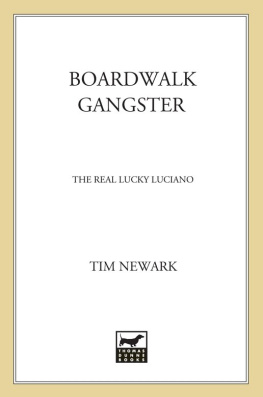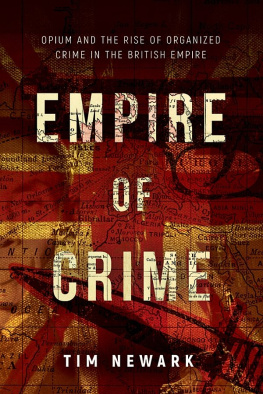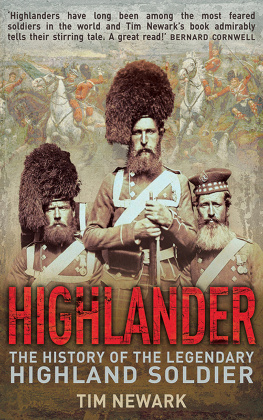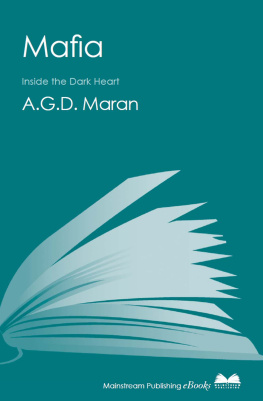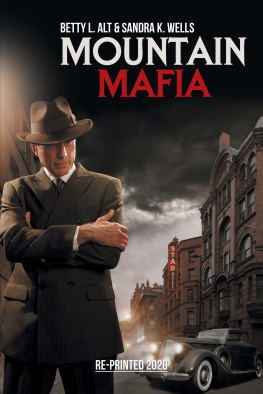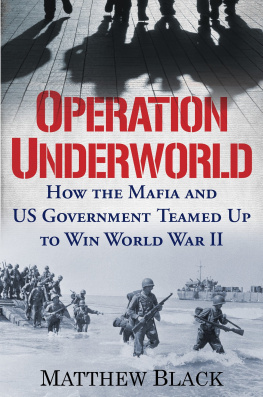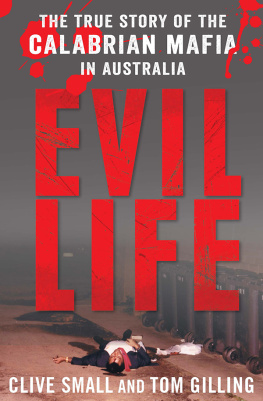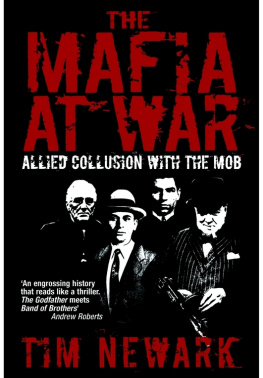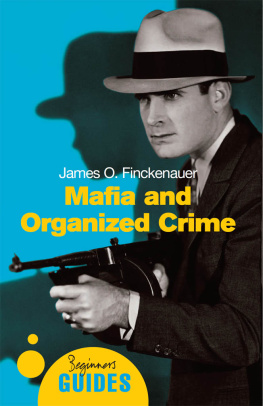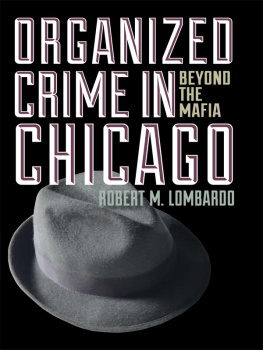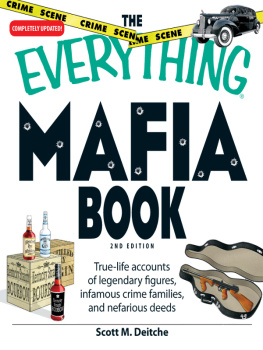Praise for
The Mafia at War
Tim Newarks fascinating book is not only an expos of the Machiavellian behind-the-scenes machinations to ease Italy out of the war but a sobering, and even chilling study in the realpolitik of war.
Sunday Telegraph
Newark tells an extraordinary tale with pace and conviction, and impressively unravels what really happened from the pervasive myths.
History Today
A highly readable account of a fascinating, little-known piece of Mafia history.
James Morton, best-selling author of the Gangland books
Also by Tim Newark
Boardwalk Gangster: The Real Lucky Luciano
Never has there been a greater challenge to mafiaphiles than the recent release of Tim Newarks book Luciano is a fascinating case of how criminals are made, broken and made again. Huffington Post
Boy, does Tim Newark expose his legend to scrutiny. The mobster dubbed Lucky Luciano built his notoriety on myths. But, by trawling through government files, Newark explodes the falsehoods by revealing the truth about his rise to power. A must for true crime fans. News of the World
Tim Newark provides what is, probably, the most balanced biography of a man who often claimed to be a victim, but had little thought for his own victims. BBC History Magazine
[I] have hugely enjoyed Tim Newarks well-written and well-researched biography of the Mafia boss Lucky Luciano. Sunday Telegraph Books of the Year
Empire of Crime: Organised Crime in the British Empire
One of Britains leading historians. Daily Mail
Snappy as Spillane, this book is packed with girls, guns and guts. The violent milieu explored by Newark is not South Side Chicago but the British Empire. The Independent
Probing areas which historians have usually tactfully avoided, Newark has lifted the curtain on a hidden era of the British Empire. Glasgow Herald
History as its meant to be: exciting, authoritative and enthusiastic. This is unquestionably one of my books of the year. City AM
First published in Great Britain in 2007 by Greenhill Books, Lionel Leventhal Limited www.greenhillbooks.com
This edition published in the United States and Canada in 2012 by Skyhorse Publishing

307 West 36th Street, New York, NY 10018
Skyhorse Publishing books may be purchased in bulk at special discounts for sales promotion, corporate gifts, fund-raising, or educational purposes. Special editions can also be created to specifications. For details, contact the Special Sales Department, Skyhorse Publishing, 307 West 36th Street, 11th Floor, New York, NY 10018 or .
Skyhorse and Skyhorse Publishing are registered trademarks of Skyhorse Publishing, Inc., a Delaware corporation.
Copyright Tim Newark, 2007
The right of Tim Newark to be identified as the author of this work has been asserted by him in accordance with the Copyrights, Designs and Patents Act 1988.
US edition: ISBN 978-1-61608-744-9
No part of this publication may be reproduced, stored in or introduced into a retrieval system, or transmitted, in any form, or by any means (electronic, mechanical, photocopying, recording or otherwise) without the prior written permission of the publisher. Any person who does any unauthorized act in relation to this publication may be liable to criminal prosecution and civil claims for damages.
CIP data records for this title are available from the Library of Congress.
Printed in the United States of America.
Illustrations
| Plate 1: | Mafiosi on trial in the 1920s; Cesare Mori; Pietro Albanese |
| Plate 2: | Cesare Mori as Prefect of Palermo; Benito Mussolini; Adolf Hitler |
| Plate 3: | Memorial concert at Misilmeri; Giuseppe Bonanno; Joe the Boss Masseria |
| Plate 4: | Charles Lucky Luciano; Meyer Lansky; Bugsy Siegel; Bugsy Siegel in the Las Vegas morgue |
| Plate 5: | Vito Genovese; Frank Costello; arrest of Lucky Luciano |
| Plate 6: | Wreck of the Normandie; Commander Charles Haffenden |
| Plate 7: | Allied chiefs plan the Sicily operation; cartoon of Roosevelt and Churchill; Allied invasion fleet off Sicily |
| Plate 8: | British troops during the invasion of Sicily; Sherman tank during the battle; GI and a Sicilian peasant |
| Plate 9: | British soldiers in Acireale; Canadian troops near Mount Etna |
| Plate 10: | Poster welcoming Allied troops to Palermo; Fascist poster urging resistance; US half-track in the streets of Palermo |
| Plate 11: | Signing of the Italian armistice; Maj-Gen Lord Rennell of the Allied Military Government |
| Plate 12: | Thomas E. Dewey; Don Calogero Vizzini; Salvatore Giuliano, bandit leader |
| Plate 13: | Castellammare del Golfo; statue presented to Lt-Col Bertram Hefford; members of Giulianos gang |
| Plate 14: | Street in Corleone; poster of Joe Bonanno; Lucky Luciano in exile |
| Plate 15: | Piazza Pretoria; Grand Hotel Et Des Palmes, Palermo |
| Plate 16: | Ucciardone prison, Palermo; plaque commemorating Joe Petrosino |
Preface
As I researched and wrote this book, many of the stories I had assumed to be true about the Mafia and its murky involvement with the Allies in World War II proved not to be quite as they had been reported. But what was even more startling was that many of the great accounts of the Mafia from this period my touchstones for writing such a book were also not only misleading in their interpretation of events, but were, in fact, I discovered fakes!
Norman Lewiss The Honoured Society is highly regarded as one of the great studies of the Mafia in Sicily. It regularly features in lists of the best Mafia books ever written. Only recently, respected biographer Caroline Moorehead listed The Honoured Society among her favourite Mafia books. As for Lewis, he is regularly acclaimed as one of Britains finest travel writers. Norman Lewis is one of the best writers, wrote Graham Greene, not of any particular decade, but of our century. And yet, The Honoured Society is false history plundered from another author.
The Honoured Society was first published in London in 1964. Many of its best stories, including the classic tale of gangster Charles Lucky Luciano giving instructions to the Mafiosi of Villalba to help the advancing American allies, were taken from the work of the Sicilian anti-Mafia campaigner Michele Pantaleone, whose book containing this story and others purloined by Lewis first appeared as Mafia e Politica, published in Turin in 1962. When Pantaleones book was later published in translation, historian Denis Mack Smith, in his preface, stopped short of accusations of plagiarism, but felt compelled to say that Lewis though he does not say so, clearly drew very substantially on Pantaleone for his book The Honoured Society.
Since the publication of the first edition of my book, I have learned that The Honoured Society is not the only Lewis book to have doubt cast on its authenticity. Lewiss Naples 44, his account of his time serving in the British Army in Italy towards the end of World War II, is not quite what it seems either. Alerted by my own doubts, fellow Mafia historian John Dickie studied the original manuscript notes Lewis wrote for Naples 44 and has concluded that Lewiss references were not sufficiently reliable to be used as historical evidence.


